4-Hydroxy-L-phenylglycine
- CAS NO.:32462-30-9
- Empirical Formula: C8H9NO3
- Molecular Weight: 167.16
- MDL number: MFCD00065932
- EINECS: 251-061-7
- SAFETY DATA SHEET (SDS)
- Update Date: 2024-12-18 14:15:30
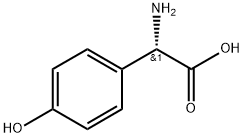
What is 4-Hydroxy-L-phenylglycine?
Chemical properties
White crystalline
The Uses of 4-Hydroxy-L-phenylglycine
Vasodilator.
The Uses of 4-Hydroxy-L-phenylglycine
4-Hydroxy-L-(+)-2-phenylglycine is a carnitine palmitoyltransferase-1 inhibitor. 4-Hydroxy-L-(+)-2-phenylglycine improves whole-body glucose tolerance and insulin sensitivity in high-fat diet-induced obese mouse with insulin resistance.
Definition
ChEBI: The L-enantiomer of 4-hydroxyphenylglycine.
Properties of 4-Hydroxy-L-phenylglycine
| Melting point: | ~240 °C (dec.) |
| alpha | 158 º (c=1% in 1M HCl) |
| Boiling point: | 365.8±32.0 °C(Predicted) |
| Density | 1.396±0.06 g/cm3(Predicted) |
| storage temp. | Keep in dark place,Inert atmosphere,Room temperature |
| solubility | Aquous Acid (Slightly), DMSO (Slightly, Heated, Sonicated), Water (Slightly) |
| form | Solid |
| pka | 2.15±0.10(Predicted) |
| color | White to Off-White |
| optical activity | [α]20/D +158±3°, c = 1% in 1 M HCl |
| BRN | 3589845 |
| CAS DataBase Reference | 32462-30-9(CAS DataBase Reference) |
| EPA Substance Registry System | Benzeneacetic acid, .alpha.-amino-4-hydroxy-, (.alpha.S)- (32462-30-9) |
Safety information for 4-Hydroxy-L-phenylglycine
| Signal word | Warning |
| Pictogram(s) |
 Exclamation Mark Irritant GHS07 |
| GHS Hazard Statements |
H302:Acute toxicity,oral H315:Skin corrosion/irritation H319:Serious eye damage/eye irritation H335:Specific target organ toxicity, single exposure;Respiratory tract irritation |
| Precautionary Statement Codes |
P261:Avoid breathing dust/fume/gas/mist/vapours/spray. P264:Wash hands thoroughly after handling. P264:Wash skin thouroughly after handling. P270:Do not eat, drink or smoke when using this product. P301+P312:IF SWALLOWED: call a POISON CENTER or doctor/physician IF you feel unwell. P302+P352:IF ON SKIN: wash with plenty of soap and water. P305+P351+P338:IF IN EYES: Rinse cautiously with water for several minutes. Remove contact lenses, if present and easy to do. Continuerinsing. |
Computed Descriptors for 4-Hydroxy-L-phenylglycine
| InChIKey | LJCWONGJFPCTTL-ZETCQYMHSA-N |
New Products
Tert-butyl bis(2-chloroethyl)carbamate (S)-3-Aminobutanenitrile hydrochloride N-Boc-D-alaninol N-BOC-D/L-ALANINOL N-octanoyl benzotriazole 3,4-Dibenzyloxybenzaldehyde 4-Hydrazinobenzoic acid 1,1’-CARBONYLDIIMIDAZOLE R-2-BENZYLOXY PROPIONIC ACID 4-HYDROXY BENZYL ALCOHOL 1,1’-CARBONYLDI (1,2-4 TRIAZOLE) 3-NITRO-2-METHYL ANILINE (2-Hydroxyphenyl)acetonitrile 4-Bromopyrazole 5-BROMO-2CYANO PYRIDINE 5,6-Dimethoxyindanone 5-broMo-2-chloro-N-cyclopentylpyriMidin-4-aMine 2-(Cyanocyclohexyl)acetic acid 4-methoxy-3,5-dinitropyridine 2-aminopropyl benzoate hydrochloride 1-(4-(aminomethyl)benzyl)urea hydrochloride tert-butyl 4- (ureidomethyl)benzylcarbamate diethyl 2-(2-((tertbutoxycarbonyl)amino) ethyl)malonate Ethyl-2-chloro((4-methoxyphenyl)hydrazono)acetateRelated products of tetrahydrofuran
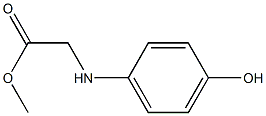


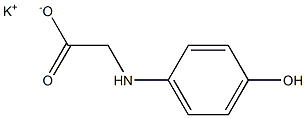
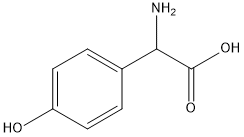
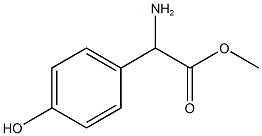

![N-L-α-Aspartyl-4-hydroxy-D-phenylglycine 1-[(1S)-1,3,3-trimethylbicyclo[2.2.1]heptan-2α-yl] ester](https://img.chemicalbook.in/)
You may like
-
 32462-30-9 4-Hydroxy-L-phenylglycine,97% 99%View Details
32462-30-9 4-Hydroxy-L-phenylglycine,97% 99%View Details
32462-30-9 -
 4-Hydroxy-L-(+)-2-phenylglycine CAS 32462-30-9View Details
4-Hydroxy-L-(+)-2-phenylglycine CAS 32462-30-9View Details
32462-30-9 -
 4-Hydroxy-L-phenylglycine CAS 32462-30-9View Details
4-Hydroxy-L-phenylglycine CAS 32462-30-9View Details
32462-30-9 -
 55441-95-7 99%View Details
55441-95-7 99%View Details
55441-95-7 -
 N-Vinylformamide 99%View Details
N-Vinylformamide 99%View Details
13162-05-5 -
 Chloro Uracil 1820-81-1 99%View Details
Chloro Uracil 1820-81-1 99%View Details
1820-81-1 -
 2-ethyl-6-methyl-3-hydroxypyridine succinate 99%View Details
2-ethyl-6-methyl-3-hydroxypyridine succinate 99%View Details
127464-43-1 -
 2-ETHYLPYRIDINE 100-71-0 99%View Details
2-ETHYLPYRIDINE 100-71-0 99%View Details
100-71-0
Statement: All products displayed on this website are only used for non medical purposes such as industrial applications or scientific research, and cannot be used for clinical diagnosis or treatment of humans or animals. They are not medicinal or edible.